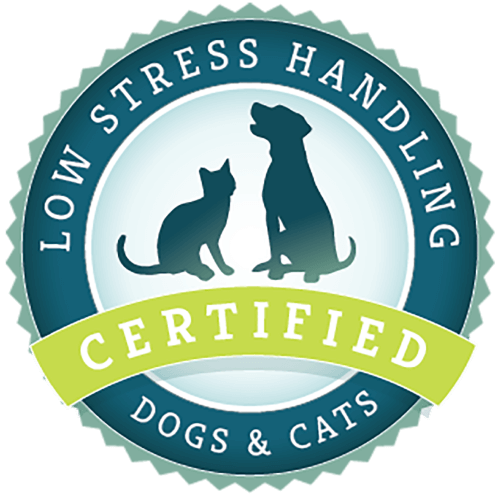What article are you looking for?
Category: I am a Student
The Collar Hold
This hold controls direction in 6 ways to reduce movement and provide staff safety from head flip or bite attempts. Combine this technique with targeting to help the dog focus and learn to stand in place for blood draw, injection, palpation, and nail trims.
The Scruff Substitute
This type of restraint is called the “cowl technique.” A pillowcase, flannel baby blanket, or thin hand towel is rolled into a tube and wrapped quickly around the neck like a doughnut to hold the head. The point of restraint is like scruffing but does not create the association of pain with hands or handling.
Low Stress Vet and Tech Communication – From the Technician’s Point of View
Communication between the technicians and the veterinarian is crucial to making vet visits as Low Stress as possible. The most important thing to remember is that you are all working together as a team to give your patients a better experience in the veterinary clinic.
Organization for Low Stress Success
Having the tools at your side to deliver the Low Stress care experience is important, especially when creating a new culture of care. It is important that the treats, paper bowls, towels and other tools are stocked every night just like the cotton balls, alcohol and syringes.
Low Stress Vet and Tech Communication
In most small animal practices, the intake is done by the technician. Weight check, temp, heart rate, and history are performed by the veterinary technician. With the advances of Low Stress Handling® skills, there may be some variation on how intensive the technician will be in gathering these vital signs prior to the veterinarian stepping into the room. There is acknowledgement of the stress level of the patient, so the technician may forego some of the intake exam to reduce stress and allow the veterinarian to triage care. I always felt it was all fun and games until the doctor
Low Stress Handling® Resources from CattleDog Publishing
As the discipline of reducing stress during veterinary care grows, it helps to have a place where you can find resources. In this post, I have gathered the handouts, blog articles, book chapters, and on-line course content descriptions in one place to help you provide a better care experience for your patients. At my practice, Okaw Veterinary Clinic, I found that hanging a framed copy of both the dog and cat body language posters helped me and my staff recognize brewing fear and aggression before it escalated. The posters are available to purchase in packs of 100, which make great

Low Stress Handling® Silver-Level Certification
Individual Certification at this level demonstrates to clients and employers the individual’s dedicated interest in Low Stress Handling®. Hospital Certification at this level demonstrates to clients and staff the hospital’s commitment to appropriately training staff in Low Stress Handling® methods.
Learn More
